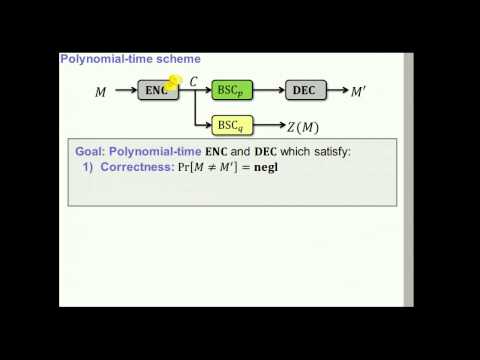Welcome to the resource topic for 2012/015
Title:
A Cryptographic Treatment of the Wiretap Channel
Authors: Mihir Bellare, Stefano Tessaro, Alexander Vardy
Abstract:The wiretap channel is a setting where one aims to provide information-theoretic privacy of communicated data based solely on the assumption that the channel from sender to adversary is ``noisier’’ than the channel from sender to receiver. It has been the subject of decades of work in the information and coding (I&C) community. This paper bridges the gap between this body of work and modern cryptography with contributions along two fronts, namely METRICS (definitions) of security, and SCHEMES. We explain that the metric currently in use is weak and insufficient to guarantee security of applications and propose two replacements. One, that we call mis-security, is a mutual-information based metric in the I&C style. The other, semantic security, adapts to this setting a cryptographic metric that, in the cryptography community, has been vetted by decades of evaluation and endorsed as the target for standards and implementations. We show that they are equivalent (any scheme secure under one is secure under the other), thereby connecting two fundamentally different ways of defining security and providing a strong, unified and well-founded target for designs. Moving on to schemes, results from the wiretap community are mostly non-constructive, proving the existence of schemes without necessarily yielding ones that are explicit, let alone efficient, and only meeting their weak notion of security. We apply cryptographic methods based on extractors to produce explicit, polynomial-time and even practical encryption schemes that meet our new and stronger security target.
ePrint: https://eprint.iacr.org/2012/015
Talk: https://www.youtube.com/watch?v=6nsqQNTXxUA
Slides: https://iacr.org/cryptodb/archive/2012/CRYPTO/presentation/5-2-Tessaro.pdf
See all topics related to this paper.
Feel free to post resources that are related to this paper below.
Example resources include: implementations, explanation materials, talks, slides, links to previous discussions on other websites.
For more information, see the rules for Resource Topics .
